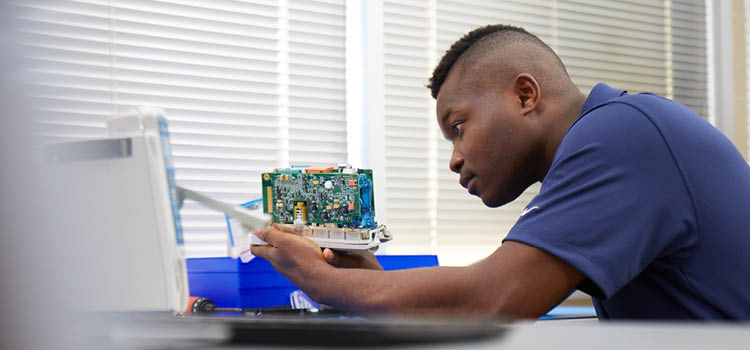“Unprecedented” is perhaps the most overused, yet most accurate term to describe the past year – a period that has challenged our healthcare system infrastructure and has given rise to, well … unprecedented disruption within our healthcare supply chain networks. Clinical engineering departments were caught navigating a highly variable workload with new barriers to performing service inside the hospital. Yet, from this experience comes significant takeaways to be carried forward as the ‘status quo’. At the very least, taking note of the past will help shape emergency preparedness plans for the next emergent event.
We’ve captured five key takeaways for CE teams to consider moving forward. Continue reading for two key areas of focus around service demands and equipment workflows. Download the complete eBook to unlock all five.
Biomeds Beware! Spikes in Increased Service Demands
2020 saw critical equipment shortages as a result of extraordinary demand – more than ever expected. To keep up and maintain a level of equipment normalcy, most hospitals purchased or rented additional equipment to accommodate this spike. With preventive maintenance, repair and PM compliance to worry about for increased equipment inventories, CE teams worked to keep up while dealing with new obstacles, such as floor restrictions and a general lack of space, third-party barriers on entering the hospital due to stringent restrictions and maintenance challenges with advanced technology such as the widely sought-after ventilator.
As the pandemic continued into the new year, the variability in patient volumes made it difficult to be planful with maintenance and repairs. A key challenge was how to cost-effectively manage this additional equipment – purchased or rented – going forward.
Key takeaway: While the pressing demands might dissipate, every CE and biomed team needs to consider their emergency and backup plans – factoring in what has worked well, any wasted resources and how to handle peaks and valleys of patient volumes moving forward.
Gaps in Equipment Workflows Exposed
Hospitals have uncovered new, innovative solutions to tackle the ongoing challenges related to overloaded EDs and ICUs and the need for specialized COVID wards during the pandemic. But as hospitals work to make room for more patients — temporarily or permanently repurposing areas — it’s changed how medical equipment moves through and around the hospital. It’s also shown a light on how inefficient some standard equipment management processes can be in ensuring availability for caregivers.
Equipment delays due to lost or non-serviced equipment should not impact a clinician’s ability to deliver care. If the pandemic teaches us anything from an equipment management perspective, standard protocol should dictate that equipment is ready and in the right place at the right time. To take it further, nursing staff should not be expected to manage this process when their number one priority is to provide care to patients. Nor should Clinical Engineering staff have to spend time searching for equipment.
Key takeaway: Protocols developed specifically for COVID wards drew attention to the need for a more consistent, centralized approach to equipment management – one that minimizes infection risk to patients and staff while still enabling biomed techs to access equipment.
To access all five key takeaways from the pandemic, we invite you to download the full eBook. There, we focus more on technical talent burnout, increased infection risks related to medical equipment and cost-savings opportunities.
Taking Advantage of the Takeaways
CE teams have the difficult task of continuing to manage the ongoing challenges brought on by the pandemic while trying to identify a go-forward service strategy. To help think through ‘what comes next,’ we’ve developed a post-pandemic checklist that includes 10 key evaluation questions for your program. The checklist combines real-world insights and best practices for meeting rising service requirements, labor challenges and cost pressures in the months ahead.












